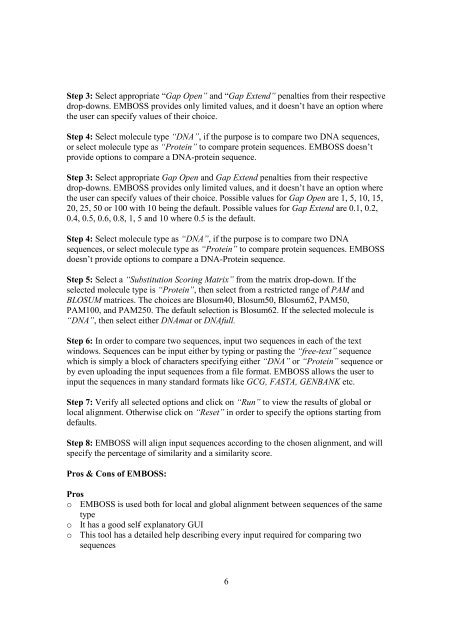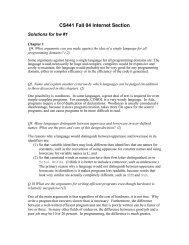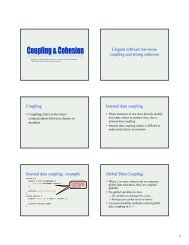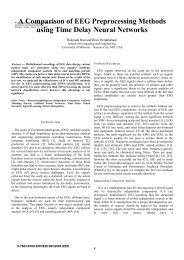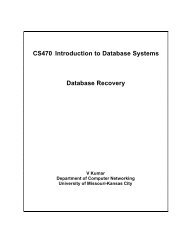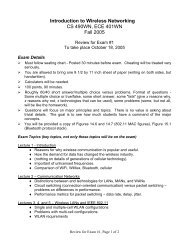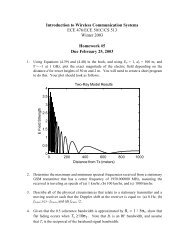Optimal Pairwise Alignment Tools - University of Missouri - Kansas ...
Optimal Pairwise Alignment Tools - University of Missouri - Kansas ...
Optimal Pairwise Alignment Tools - University of Missouri - Kansas ...
You also want an ePaper? Increase the reach of your titles
YUMPU automatically turns print PDFs into web optimized ePapers that Google loves.
Step 3: Select appropriate “Gap Open” and “Gap Extend” penalties from their respective<br />
drop-downs. EMBOSS provides only limited values, and it doesn’t have an option where<br />
the user can specify values <strong>of</strong> their choice.<br />
Step 4: Select molecule type “DNA”, if the purpose is to compare two DNA sequences,<br />
or select molecule type as “Protein” to compare protein sequences. EMBOSS doesn’t<br />
provide options to compare a DNA-protein sequence.<br />
Step 3: Select appropriate Gap Open and Gap Extend penalties from their respective<br />
drop-downs. EMBOSS provides only limited values, and it doesn’t have an option where<br />
the user can specify values <strong>of</strong> their choice. Possible values for Gap Open are 1, 5, 10, 15,<br />
20, 25, 50 or 100 with 10 being the default. Possible values for Gap Extend are 0.1, 0.2,<br />
0.4, 0.5, 0.6, 0.8, 1, 5 and 10 where 0.5 is the default.<br />
Step 4: Select molecule type as “DNA”, if the purpose is to compare two DNA<br />
sequences, or select molecule type as “Protein” to compare protein sequences. EMBOSS<br />
doesn’t provide options to compare a DNA-Protein sequence.<br />
Step 5: Select a “Substitution Scoring Matrix” from the matrix drop-down. If the<br />
selected molecule type is “Protein”, then select from a restricted range <strong>of</strong> PAM and<br />
BLOSUM matrices. The choices are Blosum40, Blosum50, Blosum62, PAM50,<br />
PAM100, and PAM250. The default selection is Blosum62. If the selected molecule is<br />
“DNA”, then select either DNAmat or DNAfull.<br />
Step 6: In order to compare two sequences, input two sequences in each <strong>of</strong> the text<br />
windows. Sequences can be input either by typing or pasting the “free-text” sequence<br />
which is simply a block <strong>of</strong> characters specifying either “DNA” or “Protein” sequence or<br />
by even uploading the input sequences from a file format. EMBOSS allows the user to<br />
input the sequences in many standard formats like GCG, FASTA, GENBANK etc.<br />
Step 7: Verify all selected options and click on “Run” to view the results <strong>of</strong> global or<br />
local alignment. Otherwise click on “Reset” in order to specify the options starting from<br />
defaults.<br />
Step 8: EMBOSS will align input sequences according to the chosen alignment, and will<br />
specify the percentage <strong>of</strong> similarity and a similarity score.<br />
Pros & Cons <strong>of</strong> EMBOSS:<br />
Pros<br />
o EMBOSS is used both for local and global alignment between sequences <strong>of</strong> the same<br />
type<br />
o It has a good self- explanatory GUI<br />
o This tool has a detailed help describing every input required for comparing two<br />
sequences<br />
6


